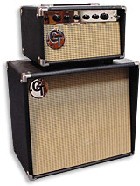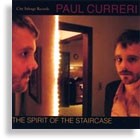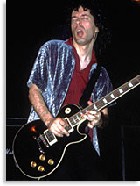
Marty Friedman made his mark as one of the foremost shredders of the ’80s when he teamed up with guitarist Jason Becker in Cacophony.
He achieved greater celebrity after joining Megadeth in late 1990 as the group’s third lead guitarist. In 10 years with the band, he recorded three albums while continuing his solo work and recording three discs of his own.
Friedman’s solo work is characterized by a variety of exotic, new-age influences and interesting textures, in contrast to the full-on assault he demonstrates with his metal groups. VG caught up with Friedman at his home in Japan to talk about his new disc, Music For Speeding (Favored Nations) and playing with Japanese artist Aikawa Nanase.
Vintage Guitar: In what ways was making Music For Speeding different from your previous solo work?
Marty Friedman: I engineered it myself, which was kind of insane, being that I’m not an engineer.
As I started to get better at it, I got into making loops and sequences, sampling guitar, and doing cool stuff like that. So I thought I’d engineer it then get great people to mix it.
I got some great people to record a few days of lead guitar for me, so I could just concentrate on playing lead guitar parts, but I did all the other engineering myself. It took me four months to engineer it and I’m really happy, and I learned a ton about recording in the process. It definitely was satisfying.
Did you use a variety of setups for the tracking?
Yes. I used a Roland GT-6 for a lot of the scratch tracks, then wound up keeping some of the scratch tracks because the tones I tweaked from the GT-6 were sounding kind of fresh.
The main amp was a Crate 300-watt model which is relatively new. I used the prototype, and it was the coolest thing I ever recorded through. I used it for most of the solos and clean parts. I didn’t expect it to have such a glassy clean sound out of a rocking amp, but it surprised me. I put it up against a bunch of other amps in the studio and I pretty much ended up using the Crate.
I had a bunch of guitars in the studio – Gibsons, Jacksons, Ibanezes, and Fenders. At that time, I was basically playing anything I could get my hands on to get the sound I wanted.
On the record, there are lots of flavors and lots of guitars – 30 or 40.
For effects, I used stompboxes by Electro-Harmonix, like the Zipper. I have two Zippers and they’re great. I also used some Japanese prototype pedals and the Roland GT-6. Really, it was anything I could get my hands on. I morphed and mutated a lot of the effects inside the computer as I recorded using plug-ins and some actual recording tricks to kind of make the sounds a little bit more interesting. I was cutting them up, flipping them backwards, and stretching them out. I was doing that kind of stuff rather than only using traditional stompboxes and effects. So I just played normally and then made it a little bit different inside the computer.
Describe the songwriting process and how the material came together.
The songs started with a basic melody that I just heard and either wrote down or tried to record so I didn’t forget.
Basically, everything was based around a melody or a few melodies I wind up embellishing until they become a song or a piece of music. If I don’t have a guitar handy, I just have to just make do. A lot of times I just hum into a tape recorder.
The song “Lust For Life” was done without a guitar. I just kind of sang it into a little voice recorder. Then when I did pick up a guitar, I learned it from that.
What is your main guitar these days?
I’m not one of those guys who has a favorite guitar. A guitar is just a tool.
I’ve been borrowing guitars from Ibanez for sessions and all the live stuff I’ve been doing. I just want a good work tool that stays in tune and sounds good. It doesn’t really go beyond that at all, boringly enough! I wish I had a Lucille story.
Do you prefer a tremolo or non-tremolo guitar?
Non-tremolo is pretty much what I’ve used forever, and probably what I’ll continue to use.
Tell us about your current endeavors in Japan.
I’m playing in a band with singer Aikawa Nanase. She’s a massive artist here. The music is hard-rock oriented, but the producer is hip and modern, and does a lot of cool stuff [similar to] what Garbage does, but maybe a little bit more dancey and with happier melodies. It’s definitely guitar rock – very aggressive, fast hard rock and kind of modern pop with great melodies. I’m so happy to be playing with an artist like her.
I’ll also be recording three songs in Los Angeles with another Japanese artist, Sera Masanori. And I just did a bunch of seminars for Musician’s Institute in Japan. That’s what got me a visa to be here.
How does the music differ between Japan and the U.S.?
It seems there’s a bigger demand for more varied kinds of music here. There’s more music, and that means there’s more quality, because the standard is really high. Domestic music in Japan outsells international music by about 90 percent to 10 percent; U2, Celine Dion, Mariah Carey, Metallica, and those types of artists make up about 10 percent of what is sold over here.
It’s absolutely a massive scene here, and it’s not unusual for a Japanese artist to sell a million copies. Aikawa Nanase has sold 12 million records in Japan.
And the music is completely different from American music. They borrow from American music to some extent, but the sense of creating a melody is very different from in America. Because people intend to sing these songs at home or in karaoke, the melodies have to be relatively easy to understand and really sink into your head after the first listen.
I think it’s an art to create a melody that’s easy to pick up and understand right away. It’s a lot harder than it sounds. Where do you see the most change in yourself as a musician? It’s easier to play now, than maybe ever. If I have an idea in my mind, it comes right out on guitar, whether it’s simple or difficult. I think there’s a lot less anxiety in playing and more just picking up the guitar and playing it without really even thinking. It seems to get easier the more I play.
Friedman live in 2002. Photo: Lisa Sharken.
This article originally appeared in VG‘s Oct. ’03 issue. All copyrights are by the author and Vintage Guitar magazine. Unauthorized replication or use is strictly prohibited.

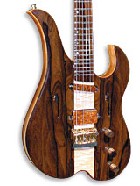
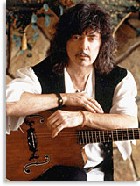
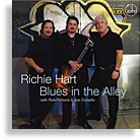
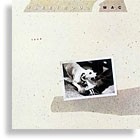
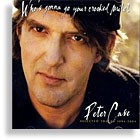
.jpg)
